December 1, 2024 · 12 min read
Advancing Inclusive Education Policies with AI-Driven Collaboration

Shaimaa Badawi
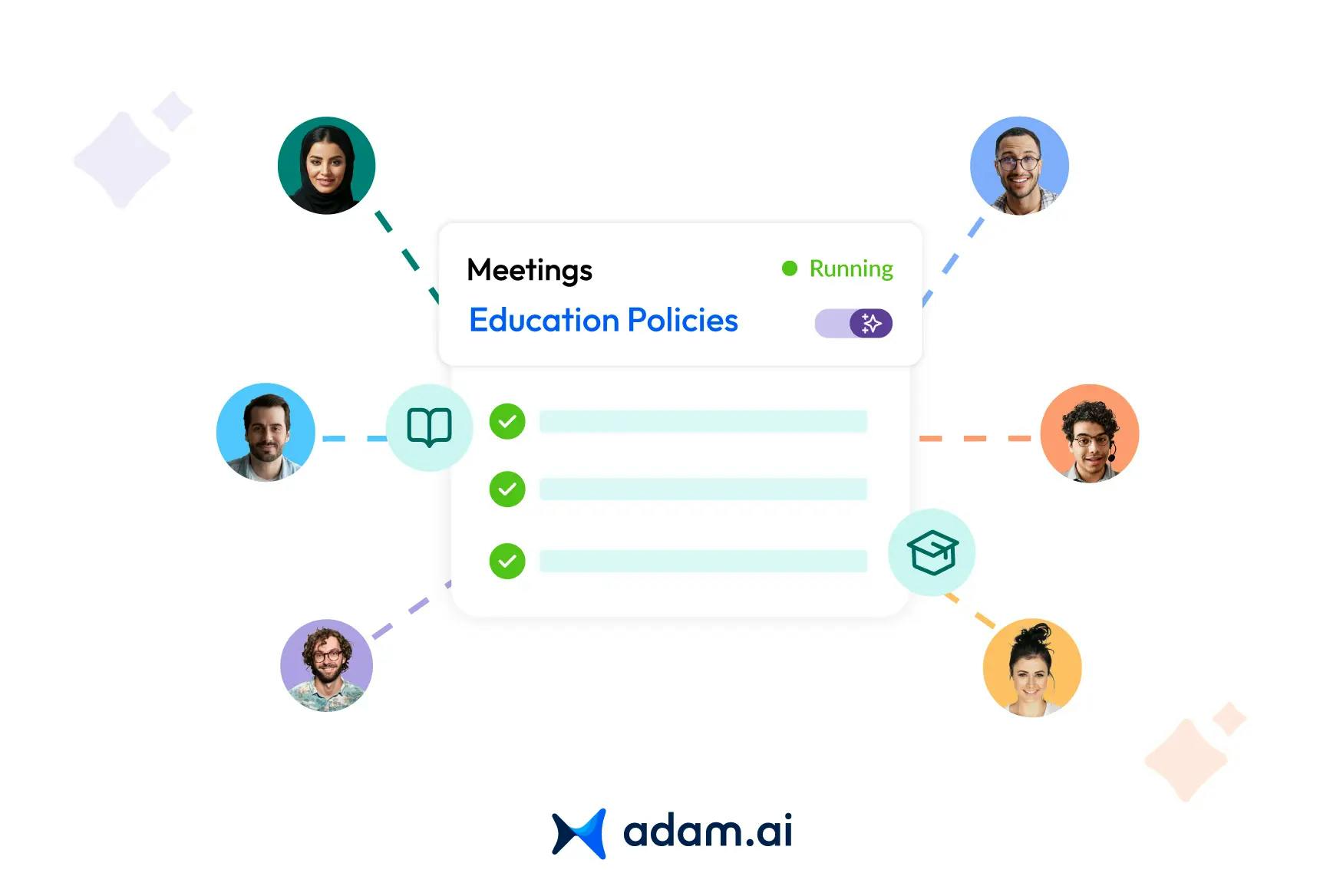
Inclusive education is a necessity for building equitable and thriving societies. However, creating effective policies that address diverse learning needs requires collaboration, innovation, and data-driven decision-making. This article explores the challenges of promoting inclusive education, the role of AI in addressing them, and how data-driven tools can transform policy-making.
What is inclusive education, and why is it essential for modern educational policies?
Inclusive education is a holistic approach to learning that ensures all students, regardless of their abilities, backgrounds, or challenges, are provided with equal opportunities to learn and thrive in a shared environment. It is rooted in principles of equity, diversity, and social justice, aiming to dismantle barriers that prevent marginalized or differently-abled individuals from accessing quality education.
Modern educational policies emphasize inclusive education because it addresses critical societal needs and promotes long-term benefits:
- Equity and accessibility: Inclusive education creates an environment where learners of all abilities can access the same high-quality education. This reduces systemic inequalities that have historically excluded students based on disability, socio-economic status, or cultural differences.
- Social integration and empathy: When students of diverse backgrounds learn together, it fosters mutual understanding, empathy, and respect, preparing them for participation in inclusive societies.
- Maximizing potential: Inclusive education recognizes that every learner has unique strengths. By tailoring teaching methods and leveraging adaptive technologies, it helps students reach their fullest potential.
- Policy alignment with global goals: Inclusion is a cornerstone of international frameworks like the United Nations’ Sustainable Development Goals, which aim to ensure inclusive and equitable quality education for all.
- Economic and social benefits: By equipping individuals with skills and education, inclusive policies contribute to reducing unemployment, poverty, and dependency rates, promoting a more equitable economy.
Modern policies that fail to integrate inclusivity risk perpetuating cycles of inequality and exclusion. Embracing inclusive education is not just a moral imperative but also a strategic necessity for fostering cohesive, innovative, and prosperous societies.
How does AI support the implementation of inclusive education policies?
AI has become a transformative force in supporting the implementation of inclusive education policies. It offers innovative tools and systems that address the diverse needs of learners while empowering educators and policymakers to create more equitable educational environments. Here's how AI facilitates the advancement of inclusive education:
1. Personalized learning
AI enables the customization of learning experiences to suit individual students' needs, whether they have physical disabilities, cognitive challenges, or language barriers. Adaptive learning systems analyze a student's progress and provide tailored content at the appropriate pace and difficulty level.
2. Assistive technologies
AI-powered assistive tools such as text-to-speech and speech-to-text applications, real-time transcription, and augmented reality help students with visual, auditory, or mobility impairments access educational materials effectively.
3. Language and cultural inclusion
AI-driven translation tools break down language barriers, enabling multilingual classrooms and supporting students from diverse linguistic backgrounds. This ensures that students can learn in their preferred language, fostering inclusivity.
4. Early identification and intervention
AI systems can analyze behavioral and academic data to identify students who may need additional support. This enables early intervention for students with learning disabilities or emotional challenges, ensuring they receive the help they need before falling behind.
5. Improved policy decision-making
Data analytics powered by AI helps policymakers understand trends, identify gaps, and allocate resources efficiently. For instance, AI can provide insights into enrollment patterns, accessibility issues, and performance disparities, enabling evidence-based decisions.
6. Enhanced teacher support
AI tools assist teachers in managing inclusive classrooms by automating administrative tasks, offering teaching recommendations, and providing professional development resources on inclusive teaching practices.
7. Promoting accessibility in remote learning
With the rise of digital learning, AI ensures that remote and online education is inclusive. Features like real-time captioning, accessible design tools, and interactive virtual environments cater to students who may struggle in traditional classroom setups.
8. Reducing bias and promoting equity
AI can minimize human biases in assessment and grading by standardizing evaluations, ensuring that students are judged fairly regardless of their background or abilities
What are the key challenges in promoting inclusive education, and how can AI mitigate them?
Promoting inclusive education involves addressing systemic, societal, and logistical challenges that hinder equitable access and learning. AI plays a pivotal role in mitigating these barriers, enabling more inclusive and adaptive educational ecosystems. Below are key challenges and how AI addresses them:
1. Accessibility barriers
- Challenge: Many students with disabilities lack access to suitable educational materials or facilities, leading to exclusion.
- AI solution: AI-powered assistive technologies, such as screen readers, text-to-speech tools, and real-time transcription services, ensure students with visual, auditory, or mobility impairments can participate fully in learning.
2. Lack of personalization in teaching
- Challenge: Traditional classrooms often fail to accommodate diverse learning styles, speeds, and needs.
- AI solution: Adaptive learning systems tailor content and pace to each student’s unique requirements, enabling personalized instruction that supports students with special educational needs.
3. Language and cultural barriers
- Challenge: Students from linguistic minorities or migrant backgrounds struggle to integrate into classrooms where the primary language is unfamiliar.
- AI solution: AI-based language translation tools and multilingual content platforms help bridge language gaps, allowing students to learn in their preferred language while integrating into the curriculum.
4. Resource constraints
- Challenge: Limited resources in underserved areas hinder the adoption of inclusive practices, such as accessible classrooms and specialized educators.
- AI solution: AI reduces costs by automating administrative tasks, creating digital resources, and providing virtual tutors, enabling schools to allocate resources to critical areas like teacher training and infrastructure.
5. Teacher preparedness
- Challenge: Many educators lack training or confidence in inclusive teaching methods.
- AI solution: AI tools offer professional development programs and real-time guidance, helping teachers adapt their strategies to meet the needs of diverse learners.
6. Bias and inequity
- Challenge: Implicit biases in teaching and assessment can marginalize students based on abilities, gender, or socio-economic status.
- AI solution: AI-driven assessments standardize evaluations, ensuring fairness and reducing the influence of subjective biases.
7. Challenges in early detection and support
- Challenge: Delayed identification of learning disabilities or emotional challenges leads to students falling behind.
- AI solution: Predictive analytics powered by AI identifies at-risk students early by analyzing patterns in behavior, performance, and attendance, enabling timely interventions.
8. Infrastructure gaps
- Challenge: Developing countries or remote areas often lack the necessary infrastructure for inclusive education.
- AI solution: AI supports scalable, cloud-based learning solutions that work across various devices, minimizing the reliance on physical infrastructure.
9. Ethical and privacy concerns
- Challenge: Using AI to collect and analyze student data raises concerns about privacy and ethical use.
- AI solution: Modern AI frameworks incorporate robust data privacy measures and ethical guidelines, ensuring transparency and protecting sensitive information
How can AI enhance meeting discussions to shape effective inclusive education policies?
AI significantly enhances meeting discussions focused on inclusive education policies by offering tools and insights that promote efficiency, inclusivity, and actionable outcomes. Here's how:
1. Facilitating evidence-based discussions
- How AI helps: AI-driven data analytics provides real-time insights into enrollment trends, accessibility gaps, and resource allocation, giving policymakers a data-rich foundation for discussions.
- Impact: Participants can focus on solutions backed by factual evidence, ensuring informed decisions that address the core challenges of inclusive education.
2. Improving accessibility in virtual meetings
- How AI helps: AI tools such as live transcription, real-time translations, and text-to-speech applications ensure that all participants, including those with disabilities or language barriers, can engage fully in the discussion.
- Impact: This creates an inclusive meeting environment, fostering diverse perspectives and equitable participation.
3. Enhancing collaboration
- How AI helps: AI-powered meeting platforms enable collaboration through features like shared digital whiteboards, smart tagging of action items, and integration of external data sources.
- Impact: These tools streamline workflows, allowing participants to focus on policy development rather than logistical challenges.
4. Streamlining agenda and priority setting
- How AI helps: AI meeting assistants can suggest agenda items based on prior discussions, relevant data, and ongoing policy objectives. AI can also prioritize agenda topics using sentiment analysis or urgency metrics.
- Impact: This ensures that critical issues, such as resource allocation for inclusive education, receive focused attention.
5. Promoting accountability and follow-up
- How AI helps: AI automatically records meeting minutes, identifies key points, and assigns actionable tasks with deadlines. It also sends smart reminders to stakeholders.
- Impact: This ensures that policy discussions lead to concrete actions, minimizing the risk of delays or unresolved items.
6. Simulating policy outcomes
- How AI helps: Predictive modeling and simulations allow participants to visualize the potential impact of proposed policies, such as resource redistribution or training programs for inclusive teaching.
- Impact: Policymakers can make better-informed decisions, avoiding unintended consequences and optimizing inclusivity measures.
7. Reducing bias in discussions
- How AI helps: AI tools analyze meeting discussions to detect biases or gaps in representation, ensuring all viewpoints are heard and considered.
- Impact: This fosters equitable participation and helps create policies that reflect diverse stakeholder needs.
8. Enhancing efficiency in policy drafting
- How AI helps: AI platforms can draft initial policy outlines based on meeting discussions and shared documents, integrating stakeholder feedback in real time.
- Impact: This accelerates the policy development process, allowing teams to focus on refining content rather than starting from scratch.
How can data analytics and AI-driven insights improve policy-making for inclusive education?
Data analytics and AI-driven insights play a transformative role in improving policy-making for inclusive education by providing actionable intelligence, fostering equity, and enabling evidence-based decisions. Here’s how they contribute:
1. Identifying gaps in access and resources
- Role of AI: AI analyzes vast datasets to identify disparities in educational access, such as underrepresentation of marginalized groups, regional inequities, or lack of resources for students with disabilities.
- Impact: Policymakers gain a clear understanding of where interventions are needed, allowing for targeted investments in infrastructure, teacher training, and assistive technologies.
2. Predictive analytics for future needs
- Role of AI: Predictive modeling forecasts future challenges, such as increasing demands for special education resources or shifts in enrollment due to demographic changes.
- Impact: Policymakers can proactively plan resource allocation and program development, minimizing reactive policy adjustments.
3. Personalizing educational strategies
- Role of AI: Data analytics helps segment student populations based on learning needs, cultural backgrounds, or socio-economic status, enabling the design of inclusive curricula and teaching methods.
- Impact: Policies can be tailored to address the unique challenges of diverse learners, ensuring no student is left behind.
4. Evaluating policy effectiveness
- Role of AI: AI-powered tools track and analyze the outcomes of implemented policies, measuring their impact on enrollment rates, academic performance, and equity.
- Impact: Real-time feedback allows policymakers to iterate and refine initiatives, ensuring continuous improvement.
5. Enhancing stakeholder collaboration
- Role of AI: Data dashboards and visualizations make complex datasets accessible to all stakeholders, fostering informed discussions and consensus building.
- Impact: This transparency ensures that policies are developed collaboratively, incorporating diverse perspectives.
6. Reducing bias in policy development
- Role of AI: AI systems can detect and mitigate biases in datasets, ensuring that policies are equitable and inclusive of all demographic groups.
- Impact: Policymakers can create fairer educational systems, avoiding unintended discrimination or neglect of vulnerable populations.
7. Optimizing resource allocation
- Role of AI: AI-driven insights identify areas of greatest need, optimizing the allocation of budgets, teacher deployment, and technology investments.
- Impact: Efficient use of resources ensures maximum impact on educational equity and inclusion.
8. Real-time monitoring and adaptation
- Role of AI: AI monitors live data from schools and districts, detecting issues like attendance drops or performance declines, and alerts policymakers to intervene quickly.
- Impact: This agility enables timely responses to challenges, reducing long-term consequences.
9. Aligning policies with global standards
- Role of AI: By analyzing international data, AI helps align local policies with global best practices and frameworks like the UN Sustainable Development Goals.
- Impact: This fosters compliance with international standards, ensuring global recognition and support.
What are the ethical considerations when integrating AI into inclusive education strategies?
Integrating AI into inclusive education strategies brings transformative potential, but it also raises significant ethical considerations. Addressing these challenges ensures that AI-driven solutions align with principles of fairness, equity, and respect for individual rights.
1. Bias in algorithms
- Ethical concern: AI systems may inherit biases from the datasets used to train them, leading to discrimination against certain groups.
- Solution: Employ diverse and representative datasets and conduct regular audits to identify and mitigate biases.
2. Data privacy and security
- Ethical concern: AI often requires collecting sensitive student data, raising risks of misuse or breaches.
- Solution: Implement strict data protection measures, such as encryption, anonymization, and compliance with regulations like GDPR.
3. Informed consent
- Ethical concern: Students, parents, and educators may not fully understand how their data is used in AI systems.
- Solution: Provide clear, accessible information about AI usage and obtain informed consent before collecting or processing data.
4. Digital divide and accessibility
- Ethical concern: Not all schools or students have equal access to the technologies needed to benefit from AI.
- Solution: Develop scalable, low-cost solutions that work on diverse devices and prioritize underserved communities.
5. Autonomy and oversight
- Ethical concern: Over-reliance on AI could undermine educators' autonomy and lead to impersonal learning experiences.
- Solution: Position AI as a supportive tool rather than a replacement, ensuring educators remain central to the learning process.
6. Accountability
- Ethical concern: Determining responsibility for decisions made or influenced by AI systems can be challenging.
- Solution: Establish clear accountability frameworks, defining the roles of developers, educators, and policymakers in AI implementation.
7. Transparency in AI decision-making
- Ethical concern: AI algorithms often operate as "black boxes," making it difficult to understand or challenge their decisions.
- Solution: Use explainable AI (XAI) systems that provide clear reasoning for their outputs and decisions.
8. Cultural and contextual sensitivity
- Ethical concern: AI systems designed in one context may fail to account for cultural or regional nuances in another.
- Solution: Adapt AI systems to local contexts and involve diverse stakeholders in their development and deployment.
9. Emotional and social impacts
- Ethical concern: AI-driven learning environments might lack the emotional and social interactions critical for holistic education.
- Solution: Ensure AI complements rather than replaces human interaction, emphasizing its role as a supportive element.
10. Sustainability
- Ethical concern: The energy consumption of AI systems can conflict with sustainability goals.
- Solution: Adopt energy-efficient AI models and prioritize sustainable practices in technology deployment
How can adam.ai contribute to the success of inclusive education policies?
adam.ai empowers policymakers to create and implement effective inclusive education policies by streamlining meeting management and decision-making processes through its robust features:
- Agenda management: Policymakers can structure focused discussions by creating detailed agendas that highlight key issues in inclusive education, such as resource allocation or equity challenges.
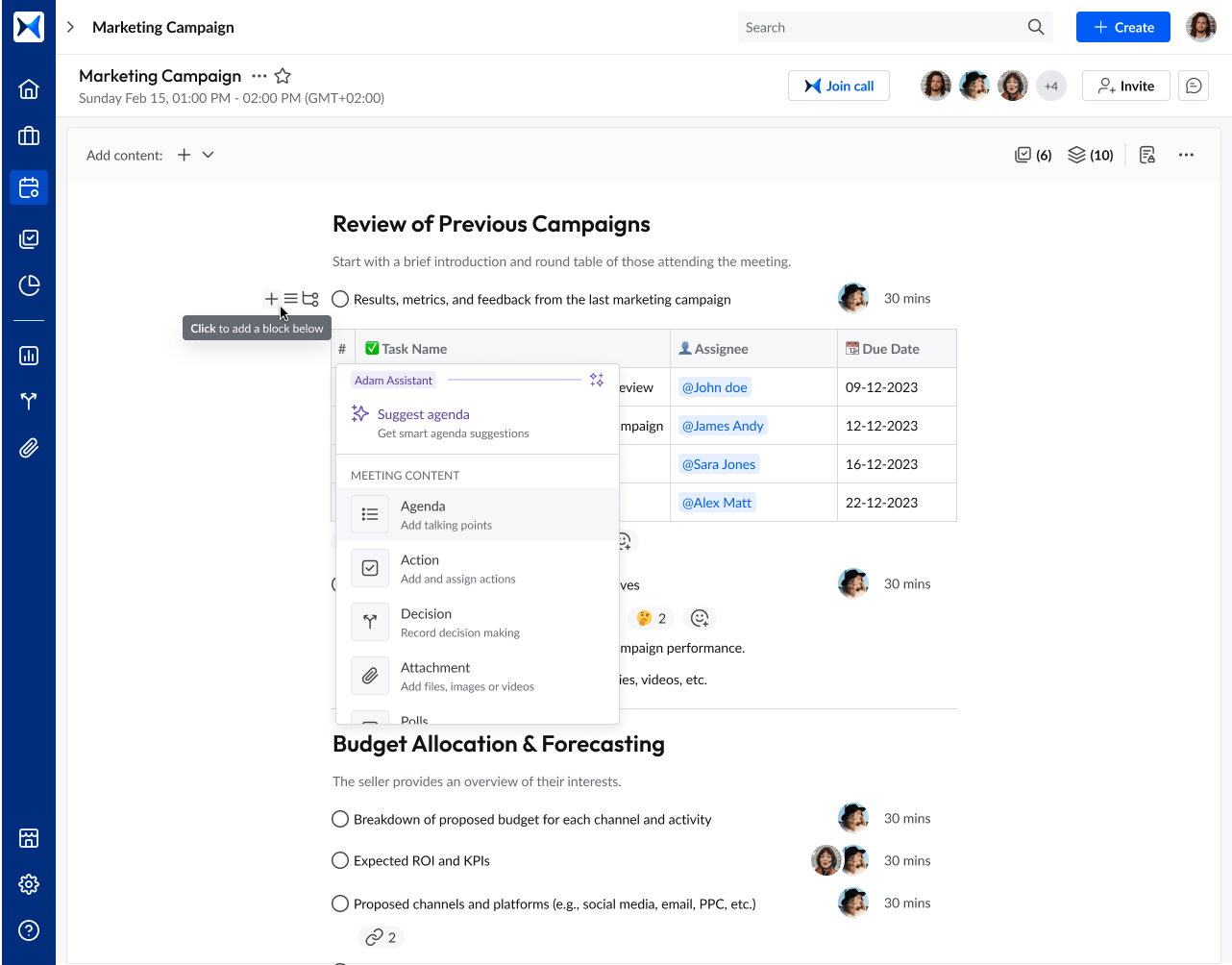
- Content collaboration: adam.ai facilitates real-time collaboration on policy drafts and supporting documents, ensuring all stakeholders contribute to shaping inclusive education strategies.
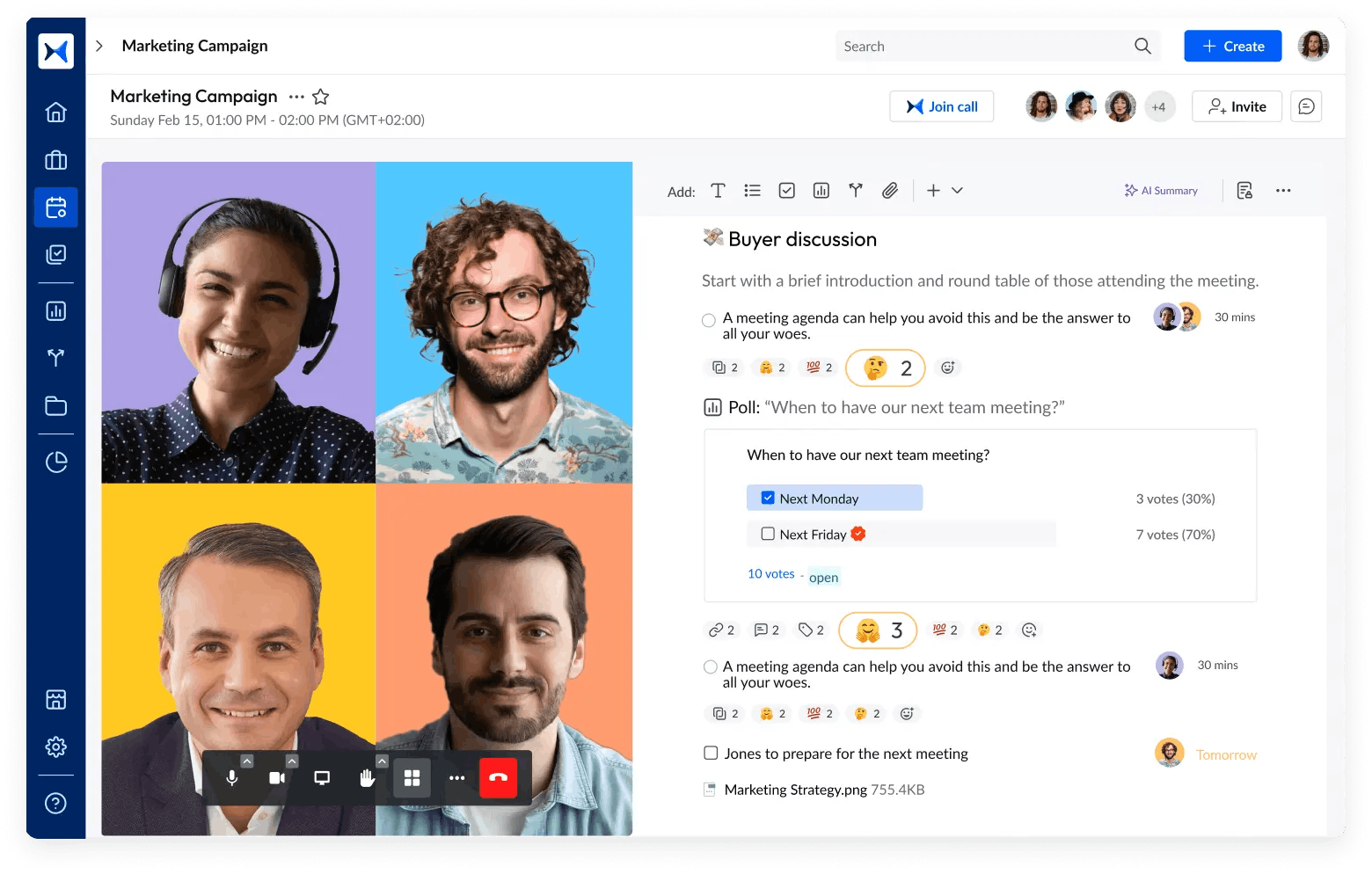
- Action tracking: Assigning and monitoring tasks directly within the platform ensures accountability and follow-through on policy-related actions, from developing new initiatives to implementing inclusive teaching practices.
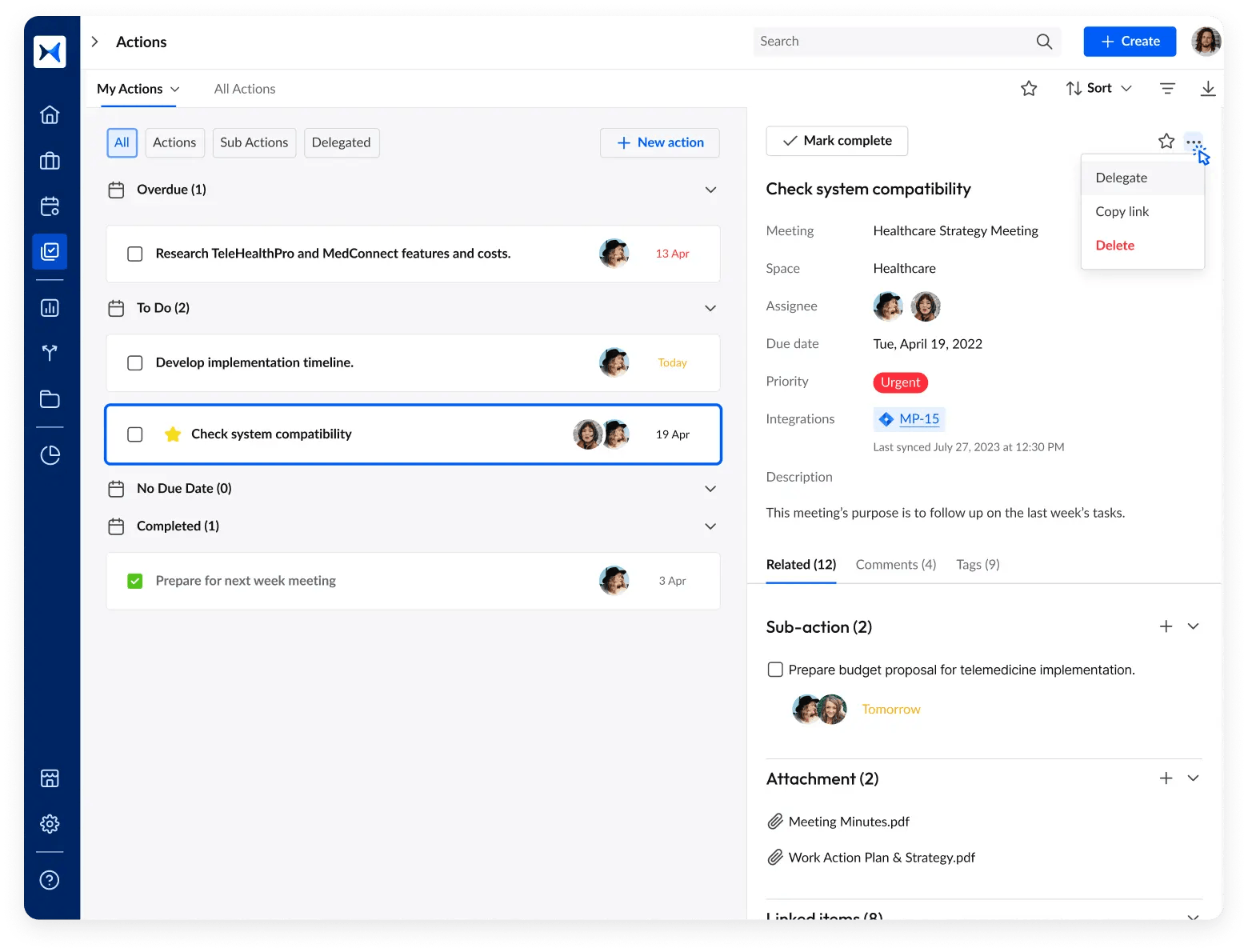
- Polling: AI-powered polling allows policymakers to gather diverse opinions and consensus on sensitive topics, fostering inclusive decision-making.
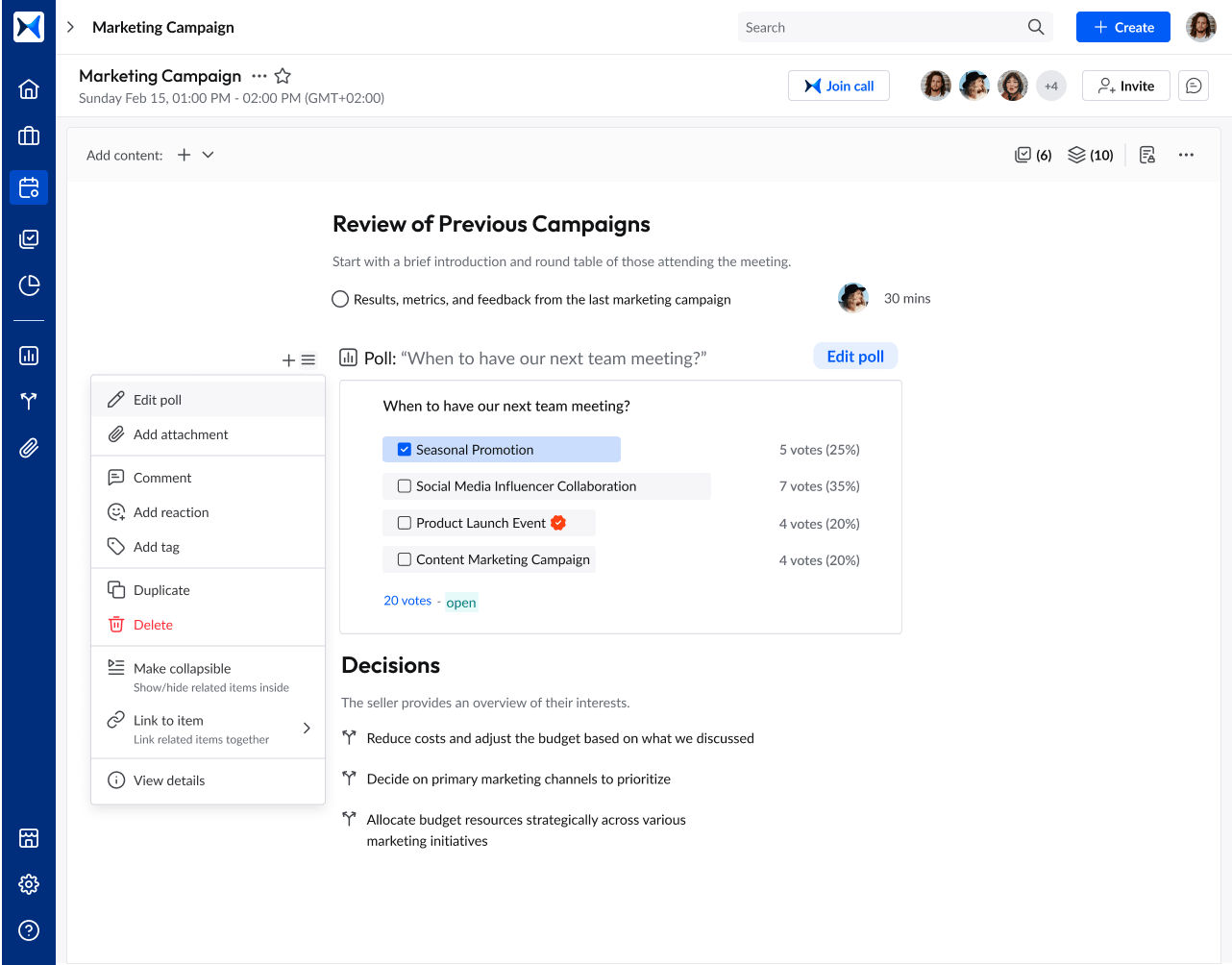
- Multi-space management: Seamlessly manage discussions across departments, agencies, or working groups to align efforts toward a unified vision of inclusive education.
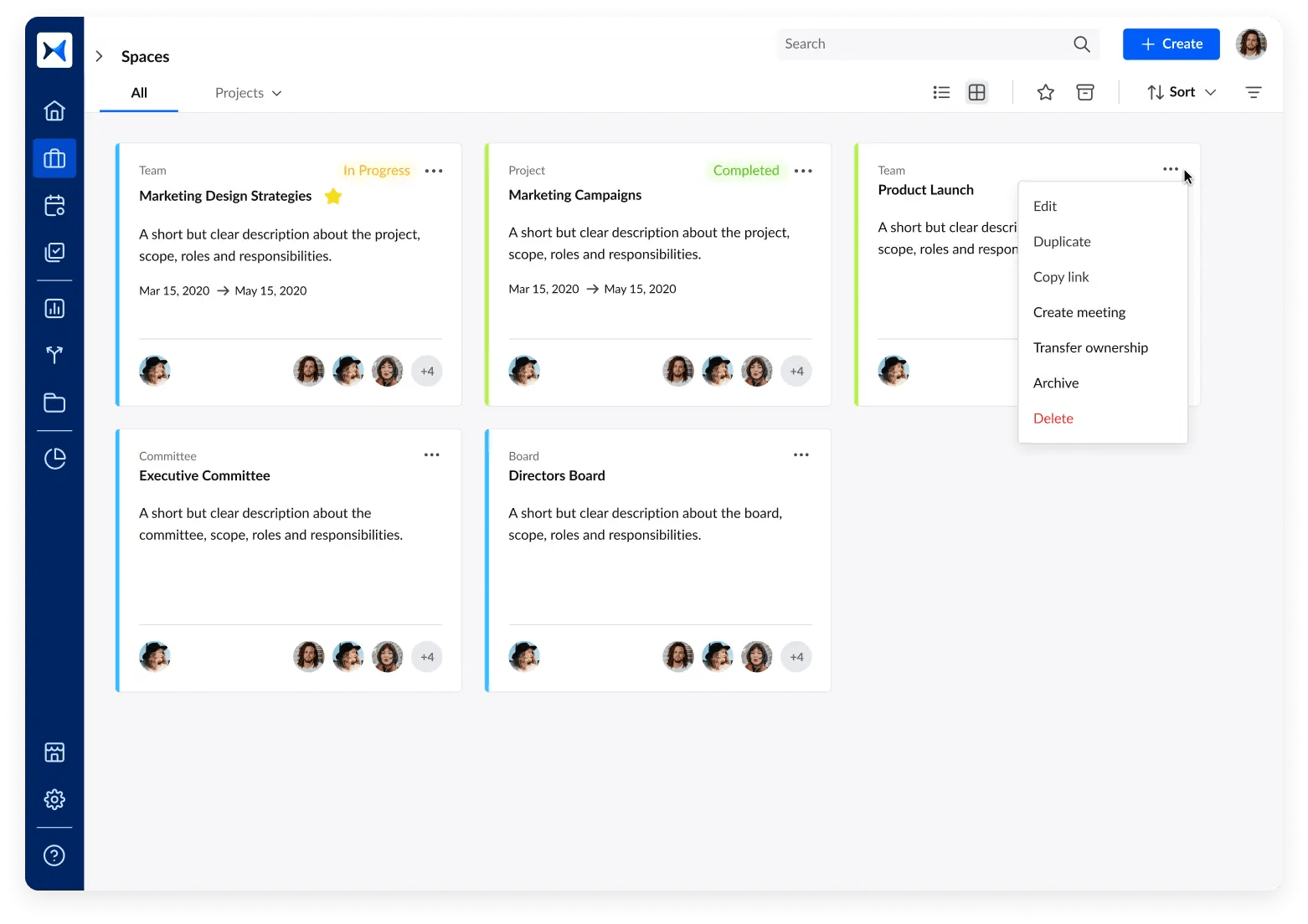
- Meeting minutes: Automatically generated and organized meeting summaries capture every detail, reducing the risk of overlooking critical insights or commitments.
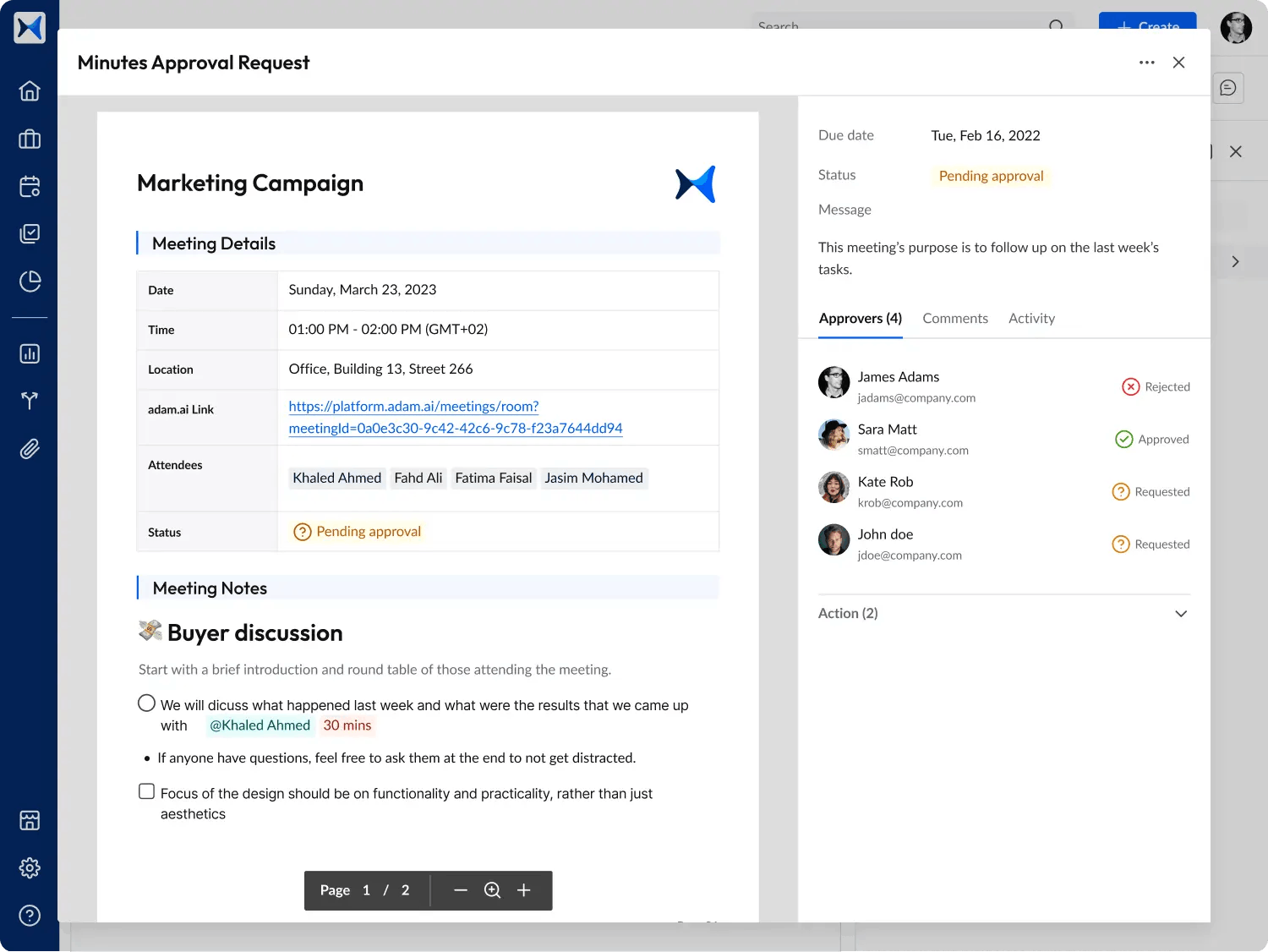
- Analytical dashboards: Real-time meeting data visualization enables policymakers to assess the progress of inclusive education initiatives, identify gaps, and make data-driven decisions to improve outcomes.
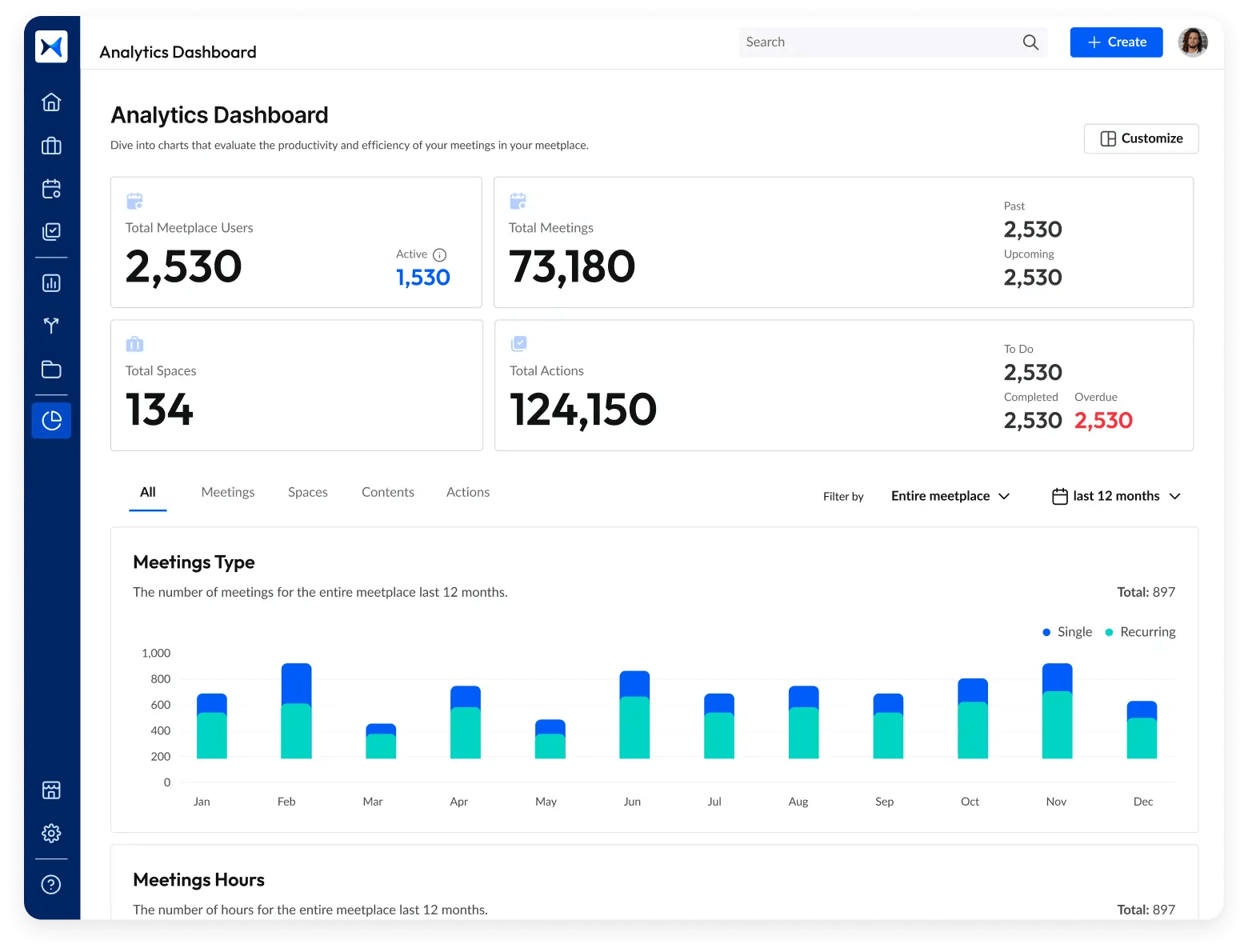
Transform how you conduct critical meetings—From meticulous preparation to effective execution and insightful follow-up, adam.ai integrates comprehensive analytics, full customization, and intuitive interfaces with powerful meeting management tools.
Easy onboarding. Enterprise-grade security. 24/7 dedicated support.
The bottom line
Driving change in inclusive education demands more than good intentions; it requires strategic use of modern tools. By leveraging intelligent systems, policymakers can ensure that inclusive education policies are not just aspirational but actionable and impactful.
And while there may be multiple solutions available, here is why adam.ai is the meeting management software platform you can trust:
- adam.ai is one of Atlassian Ventures' portfolio companies.
- In the meeting management software category on G2, adam.ai has been ranked a leader and a high performer for successive quarters in the past years.
- adam.ai has been included in the Forrester Report in the AI-enabled meeting technology landscape.
- adam.ai is trusted and used by powerful teams and organizations worldwide for all types of critical meetings, like board, committee, project management, and business development meetings.
- And most importantly, adam.ai integrates with your existing workflow, is SOC2 compliant, provides dedicated support and success, and has a free trial option.
Subscribe to adam.ai blog
Stay ahead with the latest insights—get our newest blog posts, tips, and updates sent straight to your inbox.